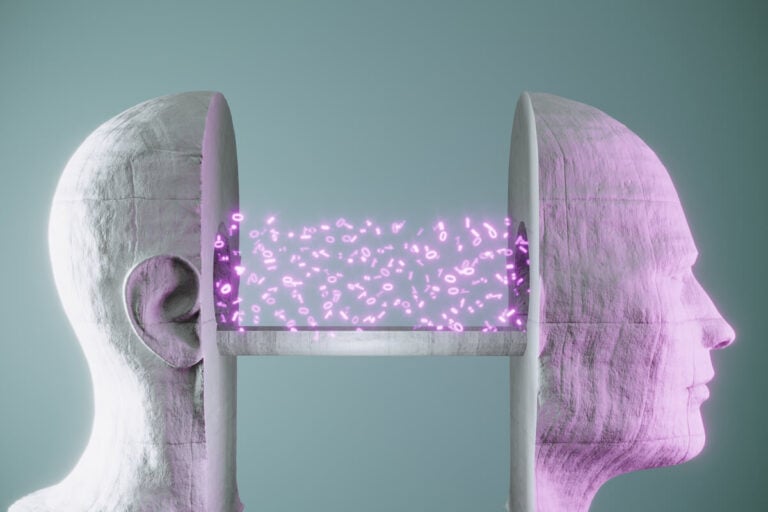Generative design is an evolutionary way of approaching engineering and design in the digital era. It replicates the design approach with cloud computing so that there are thousands of solutions to one engineering problem.
Table of Contents
ToggleWith the generative design approach, you can broaden your horizon beyond your imagination and experience. It is an amazing tool to collaborate with technology for creating better with less. More products that meet the needs of the users with better efficiency and less negativity for the environment.
In simple words, generative design software enables engineers and designers to create various design options using cloud computing and artificial intelligence (AI).
Generative design uses machine learning logic to create a unique approach to new designs. It is one step ahead of the parametric modeling design of CAD software. You can simply input the various design parameters into generative design software, and it will provide an outcome that explores different solution combinations. The result is often thousands of varieties in design with the same parameters.
The many benefits of generative design
Generative designs perfectly fit the parameters of the 4th Industrial Revolution. With the advancement of technology in the world of design, it is interesting to note the benefits of generative design.
The best part is that generative design software learns stuff on its own, that is, when you generate multiple iterations of the same design version, you’re able to achieve better results over time.
Here are a few ways in which generative design will benefit design professionals:
a) Choose from a wide variety of designs
One of the most impressive benefits of generative design software is the volume of designs generated with one set of parameters. Of course, the number of designs can be in thousands. It is also true that quantity does not always ensure quality. But with more choices available, it is also convenient to choose the best from the lot. If you still want to refine your designs, you can do that with a new set of parameters.
b) Takes less time to complete the design
Designing is not only a creative process but is also a tedious and stressful task. Many clients often set unrealistic expectations from their designers about how quickly a design should be completed. This is where generative design software comes into the picture. With proper inputs of size, shape, and other basic concepts, the generative design software can create designs and complete a design task in a much shorter time than what is humanly possible. It reduces lead time and helps in quicker product launches with satisfied and happy clients.
c) Make changes in design as many times as you want
Make adjustments and changes to the designs that you create with a generative design tool—as many times as you want. Usually, designs that are created with the generative design tool can also take automatic design changes and updates as per the changed parameters. The generative design tool comes with automated adjustment techniques that give it an edge over the CAD software.
d) Create better designs and better products
Regardless of which industry you belong to, you can create better products with a generative software tool with better designs. The software is loaded with pre-programmed mode with which you can create solutions that identify and repair issues in designs. The software comes with the unique property of learning from itself. With every new iteration of designs, it can produce newer and better designs by itself.
e) Is a cost-effective design solution
Become quicker and perfect with your design delivery with this software tool. You would also require fewer resources to create designs. Also, this software requires fewer simulations and testing and hence cuts down on a significant amount of cost for your overall design production.
f) Get great design ideas in no time
Even the most talented people face creative blockage at certain times. If you too face such designer blocks in your career, it is not a matter of concern anymore when you have a generative design tool available.
While it may become difficult for you to draw when you encounter a creative blockage, it is a thing of the past with the generative design tool. Get great design ideas with the software and add your finesse to them to deliver excellent quality that catches the eye.
As a designer, you can now focus on a more strategic role in your daily job as this software gives you the advantage of more free time with its unique design iterations.
g) Design lightweight products
Generative design software is a great tool to design lightweight products. With the help of the simulation, you can optimize the weight variation for the product while fulfilling other product requirements. You can also reduce the weight of the existing products in simulation.
h) Consolidation of various parts into a single design
This software is a great tool for saving time. It reduces the overall time for part products manufacturing simply by integrating different parts into a single one. This also reduces the total maintenance cost for these parts. So you save both time and money with this awesome designer tool.
i) Ensures great performance
With the simulation software, you can easily identify the weaknesses in the designs and eliminate them. With every iteration, you can only expect a better design of the same product, and the options are endless.
Different types of generative design software
Although the generative design is a comparatively new software in the market, it is gaining popularity slowly yet steadily amongst designers. There are several different generative design tools available in the market, and they all have a variety of advantages and limitations. It can be easy to get confused about which one to choose for your purpose. Here is a quick look at some of the most common generative design software available in the market:
a) nTopology
The nTopology’s generative design guide is yet another great tool available in the market. This tool gives you complete control over the overall workflow of the generative designs. It boasts a complete toolset that includes lattice structure generation and topology optimization. Now build excellent design workflows that can be customized for your requirements.
b) Autodesk Fusion 360
This is a great software for designing technical products. It offers excellent features in assembling and parametric designing. This software is available for free for an entire year and has great feedback from users about the designing process, fabrication, and manufacturing methods.
c) Solidworks
This toolbox helps you in creating mechanical and organic yet complex designs with their customized design tools. It comes with a stress analysis tool that eliminates any errors or reworks for the designs. But this tool mainly works with the CAD software mechanics and has a topology improvement functionality.
d) Creo
This is the perfect generative design tool if you are looking for a blend of conventional CAD designs along with adjunct manufacturing methods. You do not need to recreate any data for this tool. It is interactive and parametrically driven. Creo harnesses the cloud computing method to explore thousands of production design scenarios for you.
Inputs and constraints of generative design software
Generative design tools use CAD software techniques. With this software, you can input specific data, which automatically generates a huge number of design possibilities. These designs are supported by AI and machine learning and hence are refined towards excellence. All you need to do is put in your design goals along with the user constraints.
Some of the inputs and the constraints that you can put in the generative design tool are:
- Product size along with the weight constraints,
- Connections of the new parts with that of the old and existing ones.
- Specific instruction on designing the interface
- Conditions of operations
- Conditions about load variation
- Costing and manufacturing methods
- Information about the materials to be used etc.
Is everything good with generative design software?
The generative design software has just started spreading in the market, and it is yet to show its complete potential. As with any other newly launched software with cutting-edge technology, this tool has a certain misconception. It is not a tool that will design on its own. You need to input the right commands that include the attachment points, load variations, and dimensions.
It will not be able to provide you with information about what is right and what is wrong. It will only provide you with more options to choose from, based on the inputs that you provide. It is not a judgment tool. You can always choose your creative designs over the ones done by this tool and take these designs as inspiration only.
Generative design – closing thoughts
If you work in the design industry that involves design in any form or capacity, you could benefit from the wide range of benefits that generative design brings. The advantages are endless, from providing you with tons of design options to implementing and accommodating simple design modifications, producing great products, and saving a considerable amount of time and costs.
At the end of it, we can agree that generative design is here to stay, and it will be interesting to see how it unfolds its capacities in the years to come.





